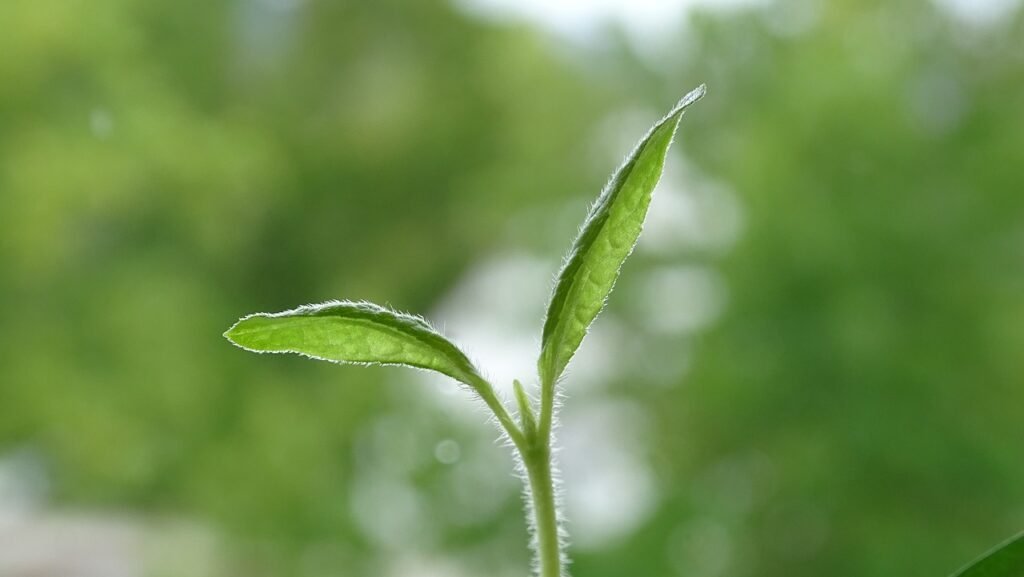So, you’re ready to start growing banana peppers, huh? You’ve picked a great pepper to grow!
Banana peppers are not only delicious and versatile in the kitchen, but they’re also fairly easy to grow, making them a perfect option for beginner and intermediate gardeners.
Whether you’re hoping to spice up your salads or add a mild kick to your favorite dishes, banana peppers have you covered.
In this beginner’s guide, we’ll walk through everything you need to know about how to grow banana peppers. From picking the right variety to troubleshooting any issues that might come up, I’ve got your back.
Plus, I’ll sprinkle in a few anecdotes from my own gardening journey to keep things fun and relatable!
Why Grow Banana Peppers?
If you’re wondering, “Why banana peppers?” let me tell you, they are worth the effort!
Banana peppers are sweeter and milder than many of their spicier cousins (I’m looking at you, jalapeños). They grow to be about 6 to 8 inches long and ripen to a bright yellow or red, depending on how long you leave them on the plant.
They’re perfect for pickling, grilling, or slicing fresh into salads.
Choosing the Right Variety of Banana Peppers
Before you dive into planting, you’ve got to decide which variety of banana pepper you want to grow. There are two main types to consider: sweet banana peppers and hot banana peppers.
Sweet Banana Peppers
These are the mild, slightly sweet peppers that most people are familiar with. They are perfect for salads, pickling, and even roasting.
Hot Banana Peppers
As the name suggests, these peppers pack a bit more heat. They’re not as fiery as habaneros or ghost peppers, but they can definitely add a little zing to your dishes.
It’s important to know which type you’re growing, especially if you’re planning to share your peppers with family or friends who may not be into spicy foods.
Trust me, I learned this the hard way after giving my neighbors a batch of hot banana peppers without warning!
When and Where to Plant Banana Peppers
Banana peppers love warm weather. That means timing is everything when it comes to planting.
Here’s how to ensure you’re setting your plants up for success.
When to Plant
Banana peppers thrive in the heat, so you’ll want to wait until all danger of frost has passed before planting them outside.
Depending on where you live, that could be anywhere from late spring to early summer. If you’re starting from seed, you’ll want to begin indoors about 6 to 8 weeks before your last expected frost date.
Where to Plant
Peppers need plenty of sun to grow and thrive. Choose a spot in your garden that gets at least 6-8 hours of sunlight a day.
They also need well-draining soil. You don’t want their roots to sit in soggy dirt—that’s a surefire way to deal with root rot.
If you’re short on space, banana peppers do great in containers too! Just make sure the container is at least 12 inches deep so their roots have plenty of room to grow.
How to Grow Banana Peppers from Seed

Starting your banana peppers from seed can be really rewarding, especially if you like seeing the process from start to finish. Here’s what you need to know:
Start Seeds Indoors
As I mentioned earlier, start your seeds indoors about 6 to 8 weeks before your last frost date. Plant the seeds about ¼ inch deep in seed-starting trays filled with a light potting mix.
Provide Plenty of Light
Banana pepper seeds need a lot of light to germinate. If you don’t have a sunny windowsill, consider using a grow light to make sure your seeds get enough exposure.
Keep the Soil Warm
Peppers like warm temperatures, and that includes their seeds. Aim to keep the soil between 70-80°F for optimal germination.
Transplanting
After about 6-8 weeks, your seedlings should be ready to transplant into your garden or containers. Make sure the soil temperature outside is at least 60°F before moving them out, otherwise they may not thrive.
How to Care for Banana Peppers
Once your plants are in the ground (or containers), it’s all about providing them with the right care.
Here are some tips for making sure your banana peppers grow strong and produce plenty of fruit.
Watering
Peppers need consistent moisture, but be careful not to overdo it. You’ll want to keep the soil evenly moist without allowing it to become waterlogged.
Watering deeply once or twice a week should do the trick, depending on how hot and dry your climate is.
I made the mistake one summer of thinking my banana peppers needed constant watering, so I gave them a daily dousing.
Turns out, I was just setting myself up for some sad, soggy roots. Lesson learned!
Fertilizing
Banana peppers appreciate a little extra nutrition throughout the growing season.
A balanced fertilizer, such as a 10-10-10 mix, will work wonders.
Start by fertilizing when you transplant your seedlings, and then continue to fertilize every 3-4 weeks as the plants grow.
Pruning
While banana peppers don’t require much pruning, you can remove any yellowing or damaged leaves to promote healthier growth.
If your plant starts to get top-heavy (which can happen as the peppers start to grow), you can also stake the plant for extra support.
Common Problems with Growing Banana Peppers
Even with the best care, sometimes things don’t go exactly as planned.
Here are some common issues you might face when growing banana peppers and how to tackle them.
Blossom End Rot
This is probably one of the most common problems pepper growers face. Blossom end rot appears as a dark, sunken spot on the bottom of the pepper.
It’s caused by a calcium deficiency and can be prevented by ensuring your plants receive consistent moisture and have enough calcium in the soil.
To fix this, try adding calcium supplements to your soil or use a fertilizer that contains calcium. You can also try using crushed eggshells—just sprinkle them around the base of the plant.
Pests
Aphids, spider mites, and pepper maggots are common pests that love pepper plants. Regularly check the undersides of leaves for aphids and mites.
If you spot them, you can spray your plants with a mixture of water and mild dish soap, or use a premixed insecticidal soap, to keep them under control.
If you find yourself battling with pests, don’t panic. There are plenty of natural solutions out there that can help you keep your plants healthy without resorting to harsh chemicals.
Harvesting Your Banana Peppers

Now for the fun part—harvesting!
You can begin harvesting banana peppers when they reach about 6-8 inches in length and are a vibrant yellow color.
If you want a bit more sweetness, let them ripen until they turn a deep red.
To harvest, simply use a pair of scissors or garden shears to cut the peppers from the plant. Be careful not to yank them off, as this could damage the plant.
And in case you end up picking more than you can eat, don’t worry, banana peppers are perfect for pickling!
Conclusion: Growing Banana Peppers Made Easy
There you have it—everything you need to know about how to grow banana peppers!
With the right care, some patience, and a little love, you’ll be enjoying your very own harvest of banana peppers in no time.
Whether you’re growing them for their sweet, mild flavor or just to add a little variety to your garden, banana peppers are a fantastic choice for both beginner and intermediate growers.
And hey, if you run into any problems along the way, don’t be afraid to experiment, learn, and try again next season. Gardening is all about the journey, and it’s a rewarding one.
So grab your seeds, get planting, and enjoy the fruits (or in this case, the peppers) of your labor!
Explore more. Fear less.
- Why Road Trips are One of the Best Ways to Clear Your Mind - November 21, 2024
- 10 of the Best Pumpkin Patches in the U.S. - October 23, 2024
- 10 of the Most Colorful Fall Road Trips in the U.S. - October 22, 2024
